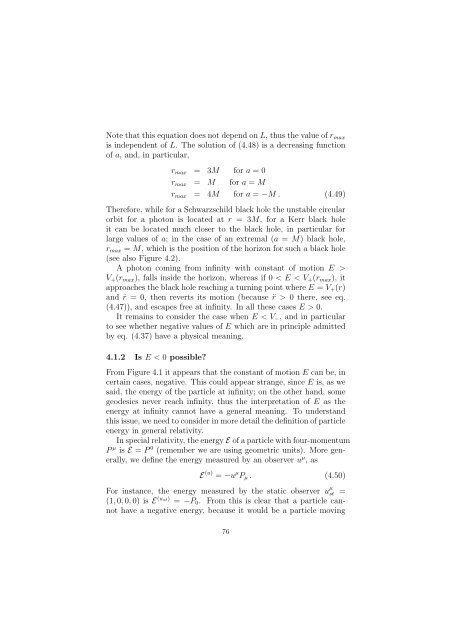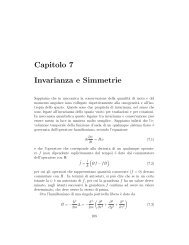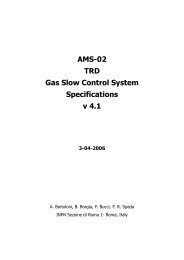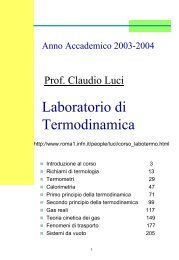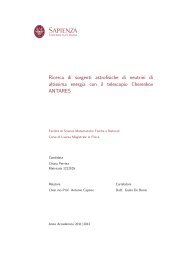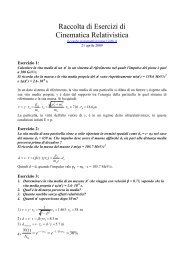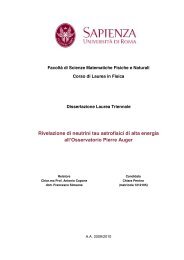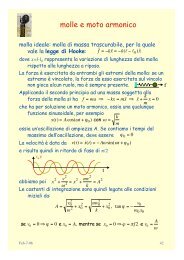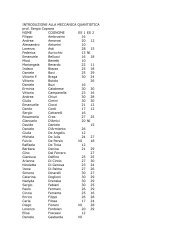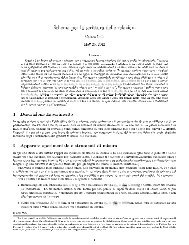Create successful ePaper yourself
Turn your PDF publications into a flip-book with our unique Google optimized e-Paper software.
Note that this equation does not depend on L, thus<strong>the</strong>value<strong>of</strong>r max<br />
is independent <strong>of</strong> L. The solution <strong>of</strong> (4.48) is a decreasing function<br />
<strong>of</strong> a, and,inparticular,<br />
r max = 3M for a =0<br />
r max = M for a = M<br />
r max = 4M for a = −M . (4.49)<br />
Therefore, while for a Schwarzschild black hole <strong>the</strong> unstable circular<br />
orbit for a photon is located at r = 3M, for a <strong>Kerr</strong> black hole<br />
it can be located much closer to <strong>the</strong> black hole, in particular for<br />
large values <strong>of</strong> a; in <strong>the</strong> case <strong>of</strong> an extremal (a = M) blackhole,<br />
r max = M, whichis<strong>the</strong>position<strong>of</strong><strong>the</strong>horizonforsuchablackhole<br />
(see also Figure 4.2).<br />
A photon coming from infinity with constant <strong>of</strong> motion E ><br />
V + (r max ), falls inside <strong>the</strong> horizon, whereas if 0 0.<br />
It remains to consider <strong>the</strong> case when E


